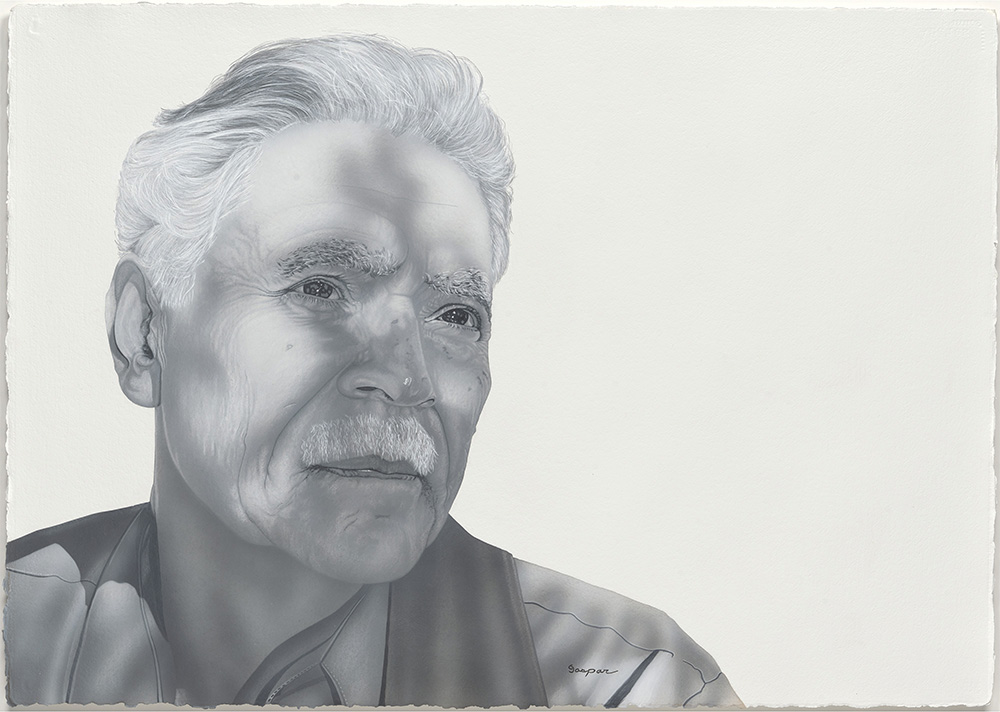Born Pastura, New Mexico
Following the death of writer Rudolfo Anaya on June 28, 2020, the National Portrait Gallery honors his indelible contributions to American literature. Born in northern New Mexico, into a family with ancestral roots in the Southwest, Anaya emerged as a writer during the height of the Chicano civil rights movement, which advocated for the social and political empowerment of Mexican Americans and affirmed their Mestizo culture. He came to national attention in 1972, when the small Chicano press Quinto Sol published his first book Bless Me, Ultima, a semi-autobiographic novel set in rural New Mexico during World War II. The story centers on a child who, with the guidance of Ultima, a curandera or healer, begins to understand the mysteries of nature, morality, and spirituality. Acclaimed for its lyrical evocation of the New Mexican landscape, its alternation of English and Spanish, and its fresh way of relaying the Mexican American experience of the Southwest, Bless Me, Ultima remains the most read Chicano novel of all time. It has been translated into at least eight languages, and a motion picture adaptation, directed by Carl Franklin, was released in 2013.
In a career that spanned almost five decades, Anaya cultivated a wide range of literary genres. He wrote epic poems, short stories, mysteries, and children’s books. In addition to Bless Me, Ultima, he won major awards for his novels Tortuga (1979) and Alburquerque (1992), whose title references the original spelling of the city’s name. Anaya also founded the creative writing program at the University of New Mexico and supported aspiring Latino writers with a retreat he established in Jemez, New Mexico. He received the National Humanities Medal in 2016 from President Barack Obama.
In 2015, the National Portrait Gallery invited Anaya to collaborate with the museum on the creation of a portrait commission that would represent his legacy. Mirroring the importance of family, land, and personal rootedness in his writings, he replied: “My portrait at the National Portrait Gallery? What would my grandfather say, that kind man who farmed in the Puerto de Luna valley? What would my ancestors say? It’s too big an honor, but I'll do it. For them I'll do it.”[1]
Gaspar Enríquez, a longtime friend of Anaya and a fellow Chicano pillar (in the visual arts), created the resulting portrait, which became the museum’s first Latino portrait commission. In his signature style of grisaille airbrushed acrylic, Enríquez depicts an aged Anaya, the shadow of a pear tree in his backyard cast on his face, seemingly introspective, and possibly with a world of thoughts in his mind.
[1] Email from Rudolfo Anaya to Kim Sajet and Taína Caragol, August 20, 2015.
